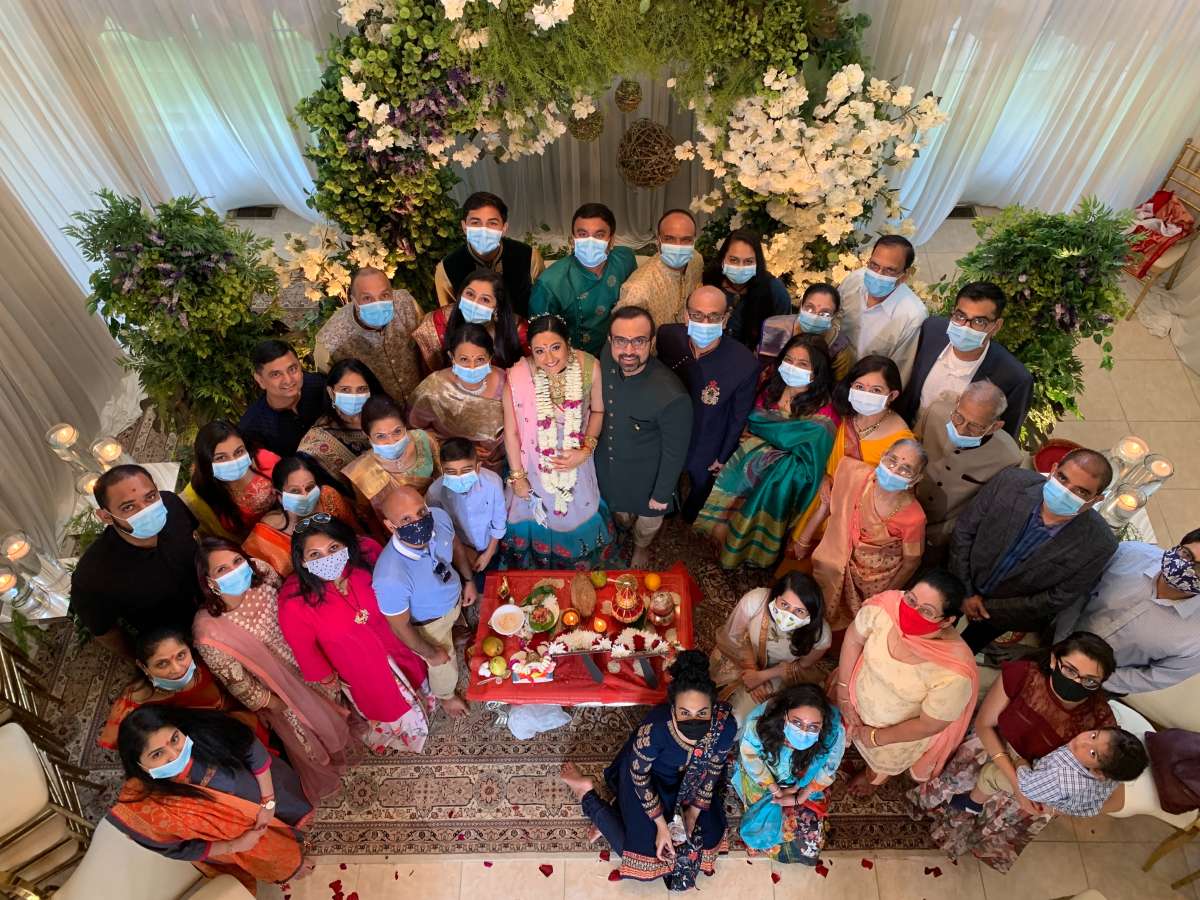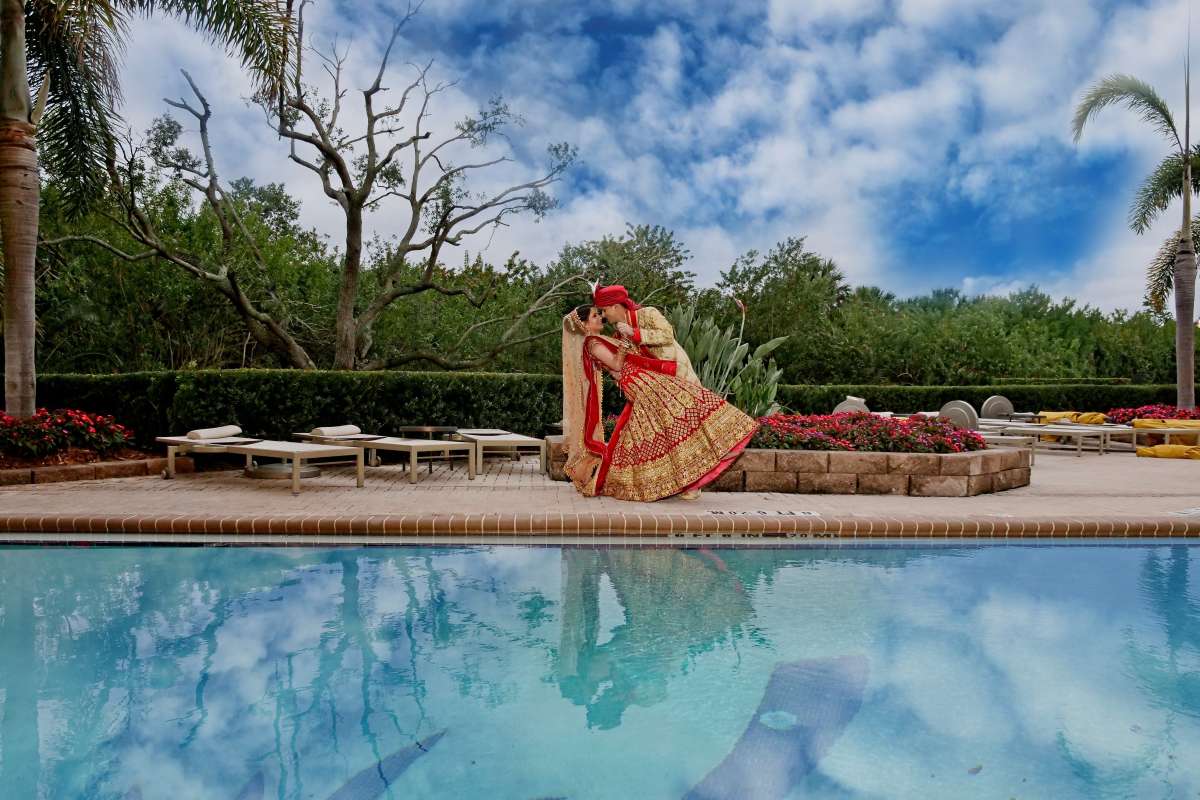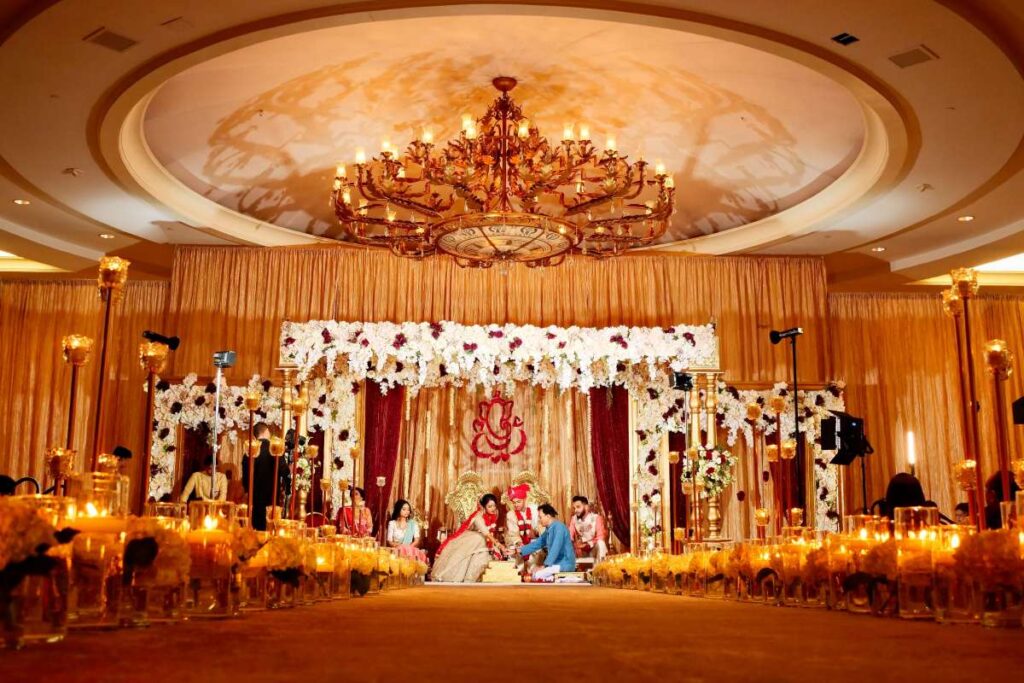Indian weddings are famous for their vibrant traditions, rich symbolism, and, of course, their expense.
But how much does a middle-class Indian wedding cost? To answer this, we must understand why weddings in India are often elaborate and costly.
Let’s get straight to the point
Middle-class Indian weddings, known for their cultural richness and elaborate traditions, often cost a lot. Expenses typically range between 25 and 70 lakh INR, covering venues, catering, attire, and photography.
Weddings are seen as both a sacred union and a family status symbol, fueling a demand for lavish celebrations. However, costs can be managed through weekday or off-peak venue bookings, digital invitations, rented attire and jewellery, DIY decor, and smaller guest lists.
Practical planning is becoming popular. Many families use budgets and wedding apps to stay within financial limits, ensuring a meaningful celebration without compromising future stability.
Why Indian Weddings Are Expensive

Marriage in Indian culture, particularly in Hinduism, is more than just a legal bond; it’s a sacred union symbolising a spiritual journey for the couple and their families.
Hindu weddings involve a variety of traditional rituals, each symbolising different life stages, with marriage marking the halfway point of the sixteen life ceremonies in Hindu tradition.
Given the significance of marriage in affirming family status and community ties, Indian weddings are often lavishly planned, showcasing economic status and family pride.
India's wedding market is one of the largest in the world, valued at approximately EUR 34.5 billion, and it’s growing by about 20-25% each year.
The average wedding in a major Indian city can range between 25 to 70 lakh rupees, depending on location, culture, and family resources.
Let’s break down the typical costs of an Indian wedding to understand how each expense adds up.
Setting a Wedding Budget
Creating a realistic budget is the first step in planning any wedding, and Indian weddings are no exception. Families often save for years, knowing marriage is a social and familial obligation.
Costs vary depending on the event's size, location, and complexity, with costs particularly high in northern India, where the dowry system and lavish celebrations are more common. A wedding budget typically includes:
- Venue and decor
- Food and catering
- Clothing and accessories
- Photography and Videography
- Invitations and favours
Typical Wedding Costs for Middle-Class Families
1. Venue and Decoration
The wedding venue and decorations make up a significant part of the budget. The cost of renting a banquet hall, hotel, or outdoor venue can range from 2 to 7 lakh INR, depending on the location and amenities. To save costs:
- Choose an off-peak wedding date or a weekday.
- Opt for decorative alternatives, like fabric, fairy lights, and paper decor, instead of fresh, such as exotic flowers.
- Consider venues outside major cities for lower rental costs.
2. Food and Catering
In Indian weddings, catering is crucial, as guests remember the food quality above all. Food is usually charged per plate, with prices ranging from 300 to 800 INR for standard plates. Food and service charges may be included if you opt for a banquet hall.
For a guest list of 500, food costs can range from 1 to 5 lakh INR. You can reduce expenses by:
- Choosing fewer menu options and avoiding luxury dishes.
- Hiring local or independent caterers who offer flexible menus and prices.
3. Wedding Attire
Wedding attire in India is often an extravagant expense. The groom's outfit, such as a sherwani or suit, might cost 20,000 to 80,000 INR, while the bride’s lehenga often starts at 50,000 INR, going up to 2 lakh INR or more for designer wear.
Additionally, families may spend 1 to 5 lakh INR on clothing for immediate family members. Some ways to save include:
- Renting wedding outfits instead of purchasing them.
- Choosing custom-made outfits from local designers instead of major brands.
4. Photography and Videography
Capturing wedding memories is essential for most couples and professional photographers can charge anywhere from 1.5 to 2 lakh INR for complete packages, including traditional pre-wedding shoots and candid photography. Couples looking to save might consider the following:
- Hiring freelance photographers who offer competitive pricing.
- Enlisting friends or family members with a talent for photography to capture smaller events.
These costs add up quickly, even when carefully budgeted. Many families turn to savings, while others use loans or borrow money from friends and relatives.
Additional Tips for Saving on Wedding Costs

Indian weddings are known for their extravagance, but there are many creative ways to keep the event within budget:
Opt for Digital Invitations
Traditional wedding cards can be costly, so couples can consider digital invitations through wedding websites or apps. Some families still print limited invitations for older relatives uncomfortable with technology, but digital invitations are generally more affordable and eco-friendly.
Rent Jewelry Instead of Buying
Jewellery is a key aspect of Indian weddings, but buying new pieces can be a financial strain. Renting jewellery allows brides to wear beautiful items without the high price tag. Depending on the pieces, rental costs can range from 2,500 to 15,000 INR.
Embrace DIY Decor
DIY decor is increasingly popular for pre-wedding events like mehndi or haldi ceremonies. Families can use inexpensive items like fairy lights, drapes, and artificial flowers to create stunning setups at a fraction of the cost. It not only saves money but also adds a personal touch.
Weekday or Off-Season Wedding
Weekend weddings are more expensive due to higher venue and vendor demand. Choosing a weekday or an off-season wedding date can reduce overall costs. Many venues offer substantial discounts during these times; even caterers and decorators may be more flexible with pricing.
Consider a Smaller Guest List
Reducing the guest list can significantly reduce the overall cost. Middle-class weddings can still be enjoyable and memorable without many attendees. Prioritising close friends and family ensures the couple can celebrate with those who matter most while managing expenses.
Destination Choices for Affordable Honeymoons
After the wedding, most couples look forward to their honeymoon. Instead of extravagant destinations, many Indian couples now choose affordable travel locations in Asia, such as Singapore, Bali, Thailand, Sri Lanka, and the Maldives.
These locations offer luxurious experiences at a fraction of the price of Western countries. Planning a honeymoon can be simplified with the following tips:
- Book in advance to get the best rates on flights and accommodations.
- Avoid peak travel seasons to avoid higher prices.
- Consider domestic options, as India offers stunning locales like Kerala, Goa, and Himachal Pradesh.
The Growing Trend of Practical Wedding Planning
A practical, budget-friendly wedding approach is gaining popularity among middle-class Indian families, who are now more inclined to allocate funds toward future stability.
While wedding planners are seen as an added expense, they can help organise the day more efficiently and reduce stress for the family.
Wedding planning apps and software are also becoming common, allowing families to plan costs, track budgets, and coordinate with vendors systematically.
Conclusion
The Indian wedding industry continues to grow rapidly, driven by families willing to spend on cultural traditions and celebrations.
Despite inflation and rising costs, a middle-class Indian wedding can be memorable without breaking the bank.
By setting a budget, prioritising essential expenses, and using smart planning tips, couples and their families can celebrate in style while saving for the future.
A wedding marks the beginning of a new life, and starting this journey with financial prudence is essential.
FAQs About Weddings
Who pays for an Indian wedding? It's mostly split between the couple and their parents, 50/50. Sometimes however, if one side is insisting on more guests or extra fanfare, then those costs are adjusted.
Depending on this, costs around the printing of invites, the size/ seating arrangements of the wedding hall (mandap), the food, and the gifts are going to be determined as well. Of this list, the venue incurs the most cost and the supporting decorations need the extra money to be spent too.
In theory, women economic and financial security in their marriage in the form of movable goods. This helped prevent family wealth break-up and provided security to the bride at the same time.
In the end, why?… Because hundreds of years ago, women were considered chattel and the bride's family used to have to pay off the groom's family in the form of a dowry to take their daughters off their hands.
The bride and groom pay for the entire wedding. Expenses are divided evenly between the couple, the bride's family, and the groom's family. Each family covers the cost for the number of guests it invites.

